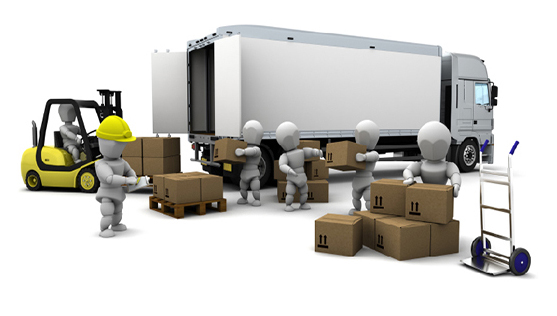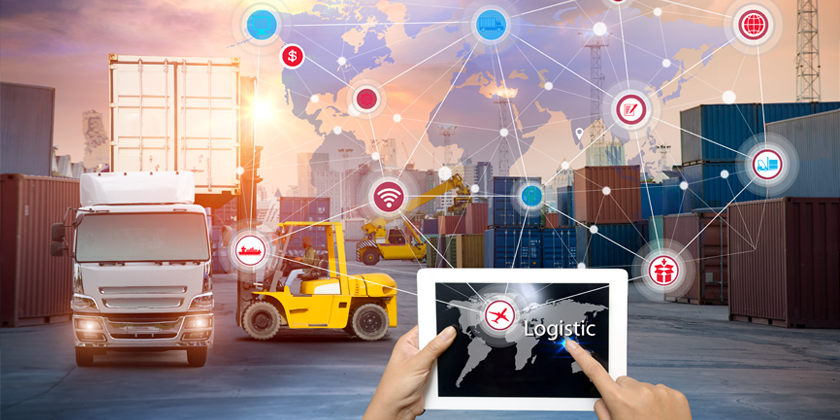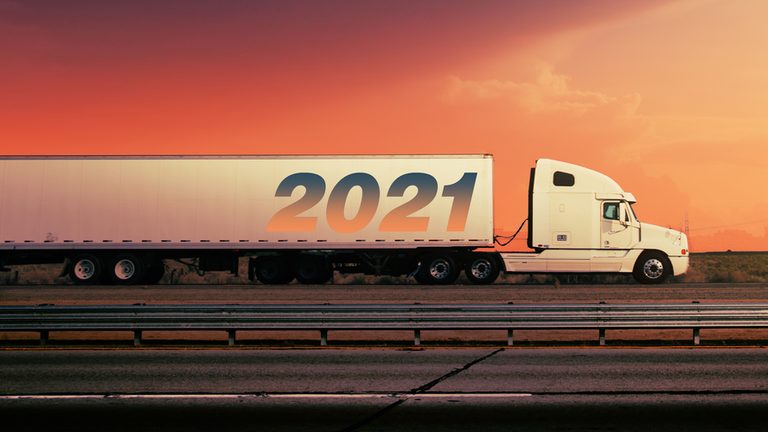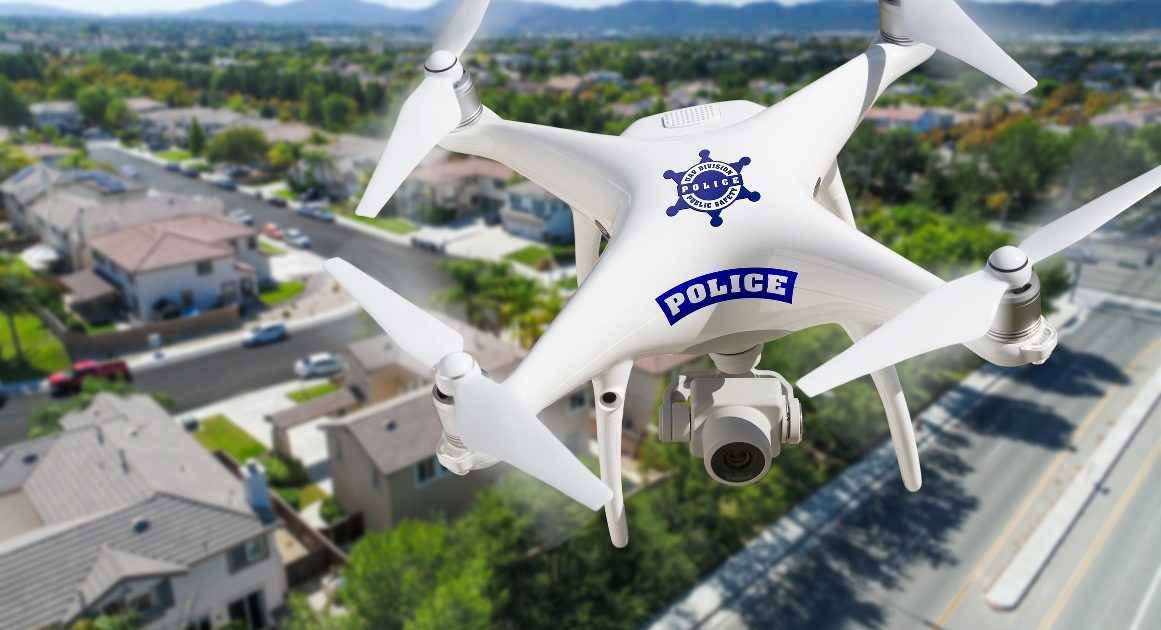Everyone is anxious to turn the calendar page next month. Industries have transformed dramatically as companies across the world rethink business models, restructure organizations, and adapt to ever-changing rules and regulations.
Read More
Topics:
Third Party Logistics,
Transportation News,
Maximizing Routing Efficiencies,
Logistics News,
Industry Trends,
Technology

Today's consumers may be more demanding than ever. They know what they want, and moreover, they want it fast. Sometimes I wonder if they really need it that fast or is it simply the mindset of the new generation of consumer. In an extensive career in the expedited freight market I was surprised to find how many receivers were not in a hurry at all for the product that their suppliers spent triple the money to ship expedited. In fact, I rented a box truck and personally delivered a few skids to a major account after an unavoidable traffic accident sidelined the original truck. After a 5-hour white knuckle drive, I was told it would be a couple hours until they could unload me. Turned out, they were in no hurry at all. The takeaway from all this personal wisdom is to be certain of the consignees' requirements before panicking about production delays and transit times. When you’re sick you call a doctor, in a legal matter you consult a lawyer. The same expertise is just as beneficial when managing your supply chain. If you do not currently have a relationship with a 3PL, think about starting one. It's a tremendous resource, particularly in a time of need. If you do have a current 3PL relationship, here are some tips to make the best of that relationship.
Think Long-Term Commitment
Like in all relationships, when an organization and its 3PL both have committed to mutual success, challenges can be overcome and the relationship can blossom. Service failures are part of our business. When you consider the vast amount of freight that travels thousands of miles across this country every week one must expect it can’t all go right. The true measure of 3PL customer service is how we react to service failures. There are fire alarms daily. A short-term mindset only creates short-term solutions. Your 3PL is invested in the long-term success of your logistics operation, so you should be too. Work together to devise long-term strategies that will improve practices and result in mutual success.
KPI's; A Staple At Land Link Traffic Systems
Many years ago, the founder of Land-Link Traffic Systems Inc. stressed the following. “What does not get measured, does not get fixed”. It would be difficult, if not impossible, for any rational person to repudiate this thought-provoking statement and important underlying principle of business. Yet, many companies do just that. Most companies, in fact, do not have the proper measurements and KPIs in place necessary to drive intelligent business decisions and to serve as support to the policies that are relied upon to drive day to day business activities.
Do not be one of those companies. Land-Link can help you support your business and gain and maintain competitive advantage through effective performance measurements.
Read More
Topics:
Supply Chain Management,
Intermodal Freight,
Reducing Freight Rates,
Logistics Business,
Maximizing Routing Efficiencies,
3D Printing,
Logistics News,
Industry Trends,
Technology
When your focusing on your logistics and transportation spend, the very first thing that you need is freight and transportation data. Without hard data, you can’t take action. What doesn’t get measured cannot be fixed. When enterprises try to act in the absence of data, they are usually guessing and won’t get the results they need. Data is the new precious metal and it is becoming more essential than ever before. Technological leaps like blockchain, artificial intelligence and machine learning run on data. They’re already beginning to transform supply chain operations across many sectors.
Read More
Topics:
Intermodal Freight,
Transportation News,
Maximizing Routing Efficiencies,
Logistics News,
Industry Trends,
Technology

Technology is disrupting the supply chain industry at a rapid pace. During this decade, e-commerce and IoT have irreversibly altered every aspect of logistics management. To remain successful, supply chain managers are increasing their adoption of cloud and technology platforms and applications. Innovative technologies, such as blockchain and machine learning, are being implemented today with the potential of significantly reshaping existing supply chain operating models. By 2023, at least 50% of large global companies will be using AI, advanced analytics and IoT in supply chain operations. That same year, over 30% of operational warehouse workers will be supplemented, not replaced, by collaborative robots. In the digital transformation age, logistics is once again undergoing a major shift. Logistics technologies, such as robotic warehouse systems, make automation a reality, while drones improve last-mile delivery capabilities and better tracking with tools like RFID tags, which improve visibility throughout the supply chain. These technologies also contribute to a rise in big data and analytics in the logistics field. RFID tags and robotic warehouse systems generate and transmit data that, when combined with other data sources, allow companies to optimize the supply chain and make better predictions and forecasts to improve efficiency and boost the bottom line.
Read More
Topics:
Third Party Logistics,
Intermodal Freight,
Transportation News,
Reducing Freight Rates,
Logistics Business,
Logistics News,
Technology

In the months since the corona virus prompted shelter-in-place orders around the world, entire companies, industries, and economies have been decimated. One market that appeared poised to escape the impact was autonomous vehicles, particularly in the case of companies whose cars can be used to transport supplies to health care workers. But it seems even they are not immune. While limited continued testing of autonomous vehicles will still be possible via virtual simulation tools, AV technology, within the context of the corona virus pandemic, may still present the possibility of addressing critical needs and providing essential services through the use of driver-less delivery vehicles. The combination of the need to minimize health risks presented to and by human drivers who deliver vital supplies and materials to the public, and the ability of AVs, equipped with disinfection tools, to deliver such items, may incentivize public authorities to authorize expanded testing and use of AV throughout the U.S.
Read More
Topics:
Third Party Logistics,
Intermodal Freight,
Transportation News,
Reducing Freight Rates,
Maximizing Routing Efficiencies,
Logistics News,
Industry Trends,
Technology
If necessity is the mother of invention a worldwide pandemic is the mother of cutting through government red tape. Vaccine approvals are basically getting rubber stamped and that’s a good thing. Automated vehicles are ramping up in anticipation of increased demand in this new environment as well. UPS will use drones to fill prescriptions for residents of The Villages in Florida, one of the country’s biggest retirement communities, amid a lock down to halt the corona virus. The time-sensitive
Read More
Topics:
Supply Chain Management,
Third Party Logistics,
Transportation News,
Shipping News,
Logistics News,
Technology

Data is the new precious metal and it is becoming more essential than ever before. Technological leaps like blockchain, artificial intelligence and machine learning run on data. They’re already beginning to transform supply chain operations across many sectors.
Is your supply chain organization prepared to adopt these emerging technologies and generate the operational improvements to deliver the anticipated ROI? As we’re seeing, digital technology in the supply chain enables end-to-end decision-making, visibility into supply-demand information across the network and supports the operational level response in plants, DCs and retail stores.
Sometimes it takes an outsider to ask the obvious questions about processes that employees no longer question. Whether the questions have to do with routing guides, packaging practices or distribution center locations, it is often helpful to get an independent perspective. One of the main benefits of sharing data with a third party is an objective perspective that can cut through the culture and the “We’ve always done it that way” syndrome. A trusted Enterprise Logistics Provider with deep technology and operational experience can provide that objective view of the data and make recommendations without regard to internal influences.
Careful and Regular Data Collection is Critical
Data management is not a “set it and forget it” activity. A culture of continuous learning will be the key. Your enterprise must continually evaluate the integrity of your data collection and management programs not only against your internal requirements but also external developments. Are there gaps or inconsistencies in your data? Will it be available in the formats necessary to support adoption of relevant technology? For example, inventory optimization relies on a body of robust, accurate data. Without it, the results will be skewed and potentially damaging to your supply chain. Is your enterprise able to ensure your data is accurate and up to date? Garbage in will get you garbage out.
Look to Industry Professionals for Guidance
Rather than investing in technology tools directly, a trusted Enterprise Logistics Provider with deep technological expertise can support data management and analysis capabilities as a value-add in the partnership. As a solutions provider, the Enterprise Logistics Provider can stay up to date on the latest developments and evolution, reducing the need for ongoing investments in IT infrastructure.
Creating a comprehensive plan to clean and structure existing data and capture as much data as possible going forward will deliver benefits across the enterprise. As the digitization of the supply chain continues, those who aren’t able to ask the right questions could be left behind. For help determining if your data is ready to support the next level of technology, contact us today.
Read More
Topics:
Logistics News,
Industry Trends,
Technology,
Big Data

The debate over whether density-based pricing will succeed in toppling the traditional National Motor Freight Classification’s (NMFC) based pricing in the LTL industry is an ongoing debate. Carriers are pushing for dimensional pricing to combat the profitability of lightweight shipments. This is the basis of the argument. Under the NMFC classification density was taken into consideration as was packaging and commodity but it was largely based upon weight. Back in the day, carriers in a battle over business after deregulation, were offering FAK (Freight All Kinds ) tariffs to get the business. This strategy ultimately led to unprofitable operation ratios, subpar delivery performance and ultimately the bankruptcy of some major carriers. Jevic Transportation of Delanco, NJ is the first one that comes to my mind. Interestingly New Century transport, which was founded by Jevic‘s founder, adopted a similar strategy ending in the exact same fate. Considering this history and the recent high-profile bankruptcies of other major national freight carriers in recent years, one would have to conclude the days of beating up the carrier on rates is over. Unlike in the past, the LTL industry today has a massive volume of smaller shipments. There is also the challenge of completing same-day deliveries or time definite deliveries. Likewise, these shipments are not always of consistent size and density, making it difficult for LTL shippers to sustain profitability.
Today, if you want dependable service, you’re going to have to pay for it. Let’s see if we can help you avoid some of the pitfalls to come.
Dimensional Pricing
There is no secret to dimensional pricing. It’s really a simple equation; L x W x H / 139. It could be argued that the ecommerce boom started all this controversy overweight vs size. Ecommerce shippers have millions of items in inventory and a finite amount of box sizes. I’ve been personally amazed at the box size of some items I’ve received. It didn’t take long for the parcel carriers to figure that their trucks were dimming out before weighing out. This may have been the catalyst for dimensional pricing. It wasn’t long before the LTL carriers arrived at the same conclusion. They were charging by pound through diluted tariffs, not by the room the pallet actually occupied.
FedEx Freight, XPO Logistics, and other LTL carriers have been installing equipment that can scan a palletized shipment and, combined with scales, provide the cubic dimensions and weight needed to check the shipment classification. The consensus among LTL industry executives is that the current classification system is on its way out. The reality is that LTL carriers sell space in a trailer. Using the dimensions of a pallet identifies precisely how much space that shipment will require, thereby providing accurate real estate pricing.
Shippers Prepare
Many shippers believe dimensional pricing amounts to a rate increase, and the number of shipments, they say, are re-billed once they go through a dimensioner, supporting their contention. It can also be argued the shippers are finally being charged an accurate rate. Shippers who are not prepared to invest in equipment to measure their shipments’ dimensional weight will have to adopt strict packaging protocols to package their freight in a uniform method as to avoid a dimensional pricing situation.
The ability to double stack pallets is a prime example. Under dimensional pricing a pallet that cannot be double stacked will be billed at 2 pallet spaces since the pallet will essentially occupy the air above it. To date, much of the use of dimensional pricing has been limited to W & I procedures at truck terminals. However, by capturing more and more dimensional shipment data, LTL carriers are laying the data foundation needed for the expanded use of dimensional pricing.
Our supply chain managers at Land Link Traffic Services can help with packaging strategies, supply chain management techniques to maximize lane and weight balancing strategies and overall shipment planning protocols to maximize your freight spend in this more expensive environment. Finally, the Coronavirus will certainly cause some challenging strain on the supply chain. Don’t wander through this uncharted territory alone. Contact us today for a supply chain consultation.
Read More
Topics:
Transportation News,
Logistics Business,
Shipping News,
Logistics News,
Industry Trends,
Technology
The federal government has proposed long-awaited changes to the hours-of-service rules that would increase truck drivers’ flexibility while on duty. FMCSA’s newly proposed HOS rule offers five main revisions to the existing HOS rules, which are based on extensive public comments shared with the agency since last year.
The adjustments would happen in five areas:
1. Flexibility for the 30-minute break rule
by tying the break requirement to eight hours of driving time without interruption for at least 30 minutes; and allowing the break to be satisfied by a driver using on-duty, not-driving status, rather than off-duty.
2. Modifying the sleeper-berth exception to allow drivers to split their required 10 hours off duty into two periods: one period of at least seven consecutive hours in the sleeper berth and the other period of at least two consecutive hours either off duty or in the sleeper berth. Neither period would count against the driver’s 14‑hour driving window.
3. Allowing one off-duty break of at least 30 minutes but not more than three hours that would pause a truck driver’s 14-hour driving window, provided the driver takes 10 consecutive hours off-duty at the end of the work shift.
4. Modifying the adverse driving conditions exception by extending by two hours the maximum window during which driving is permitted.
5. Changing to the short-haul exception available to certain commercial drivers by lengthening the drivers’ maximum on‑duty period from 12 to 14 hours and extending the distance limit within which the driver may operate from
100 air miles to 150 air miles.
The proposed rule would not increase driving time and would continue to prevent commercial operators from driving for more than eight consecutive hours without at least a 30-minute change in duty status.
Safety Remains The Driving Force For Both Sides
Most in the logistics industry consider trucking deregulated. While this perspective is accurate in a financial sense, the truth is trucking is among the most regulated industries in the country. It is important to understand government regulations add significantly to the cost of operations which, of course, is reflected in the rates. Most carrier executives question the depth and breadth of the regulations and how the federal regulators iron out their final rulemaking is critical to fleets’ efficiency and legal use of time. For example, a truck driver has 660 minutes (11 hours) of legal driving time during his or her 14-hour “on duty” time. How those minutes are divvied up not only matters to safety, but it’s a huge factor in both the driver’s compensation and the carrier’s financial wellbeing. Among the challenges of drafting regulations for the trucking industry is the myriad of equipment types and services offered. Dry van, refrigerated, bulk carriers and other specialty carriers have present different safety concerns. Add to that mix carriers who transport more dangerous commodities such as hazardous materials like chemicals and munitions, fuel and over-dimensional loads and you end up with multiple regulations to cover all possibilities.
Manufacturers Look To Technology for Help
Technology is constantly evolving, particularly for motor vehicles. Self-automated technologies such as automatic braking systems have already appeared in passenger vehicles and are rapidly becoming available for large semi-trucks as well. Safety systems recommended by AAA researchers include:
- Air disc brakes, which significantly reduce the distance a large truck needs to stop.
- Automatic emergency braking systems, which engage the brakes if the system detects the truck is about to collide with another vehicle or object.
- Lane departure warning systems, which detect when a truck drifts from its intended lane and may hit vehicles in neighboring lanes.
- Onboard video monitoring systems, which monitor the road in front of a truck or the driver’s actions inside the cab to detect when unsafe practices occur.
Some of these systems not only help reduce the risks of truck accidents but may also aid injured victims recover legally afterward. For example, onboard systems can record if the lane departure warnings triggered before the accident, or whether the automatic braking engaged. This can provide evidence that a truck driver was distracted, fatigued, or otherwise impaired behind the wheel. Onboard video monitoring systems are pretty much common these days. They provide a solid picture of what transpired in any incident. They are a welcome e addition to most fleets since they reduce litigation costs and help drivers become more safety conscious.
Read More
Topics:
Transportation News,
Logistics Business,
Shipping News,
Logistics News,
Industry Trends,
Technology

Artificial intelligence and the Internet of Things are making their initial forays into a myriad of warehouse operations. The expected outcome; DCs able to respond dynamically to current supply chain conditions instead of pre-set rules. Look for newfound flexibility and an ability to respond to specific customer demands. The general programming protocol is to minimize human intervention in daily supply chain operations. This should not be news to anyone involved in complicated supply chain systems.
We are at the point where AI and IoT are viable IT applications for the warehouse. Both are powerful new tools that better enable warehouse and distribution center activities to keep pace with rapidly shifting supply chain dynamics. Artificial intelligence systems can learn, over time, the patterns and trends that are most important. It can identify when specific events occur which require human intervention. It can sense security breaches and stop them before they become crises. Simply put, for the IoT to grow to its full potential, it needs the processing power of artificial intelligence.
Integration Into the Supply Chain
AI promises a brave new world of computers that can plan, strategize, evaluate options, calculate probabilities, and make smart decisions. The inter-connectivity and dual reliance of both systems is evident in the automotive applications currently being tested. Repetitive daily environments are best suited for early stage AI learning and IoT experiences at this stage in the application. An example is a typical commercial bus route. The travel route is planned and timed out as are the stops. IoT applications including sensors, video cameras and time keeping technology all gather data throughout the daily route. This data is the basis upon which AI evaluates and electronically digests the information. It is through the digestion process that AI basically learns the particular details of the route like staying on time, the average number of passengers per stop, and, in fact, the unpredictable events like traffic and weather delays. It is through this repetitive experience that AI will eventually be able to maximize the efficiency of the route by anticipating daily events along the route based upon historical data.
The same inference can be applied to a route for a commercial delivery unit whether it be a truck, plane, train or any other conveyance unit. In this example the desired result is the same. To maximize efficiency by learning the route and experiencing every possible condition which may affect it so contingency plans can be implemented in real time to maintain the integrity of the delivery. The benefit of this technology application will become evident once driver less technology is fully implemented.
Early Areas of Implementation
AI can significantly improve business operations by leveraging the tremendous amount of data generated by sensors monitoring the production and movement of products using IoT. The result is referred to as AIIOT, which is the merging of AI and IoT to manage inventory, logistics, and suppliers with a higher level of awareness and precision. The supply chain is one area that can benefit the most from streamlining since it has a direct influence on profitability and customer satisfaction.
There are already several implementations of AI and machine learning where supply chain efficiency is improved:
Read More
Topics:
Transportation News,
Shipping News,
Logistics News,
Industry Trends,
Technology,
Big Data












 Land-Link, a well respected professional organization, has been providing its clients with effective transportation and logistics solutions since 1978.
Land-Link, a well respected professional organization, has been providing its clients with effective transportation and logistics solutions since 1978.

